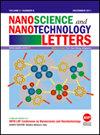Ulinastatin-Gold Nanoparticles Reduce Sepsis-Induced Cardiomyocyte Apoptosis Through NF-κB Pathway Inactivation
引用次数: 1
Abstract
Nanodrug delivery systems have recently become widely studied and applied in the medical field, and nanomaterials have greatly improved drugs’ efficacy. Ulinastatin has been confirmed to inhibit myocardial damage caused by sepsis. However, the effect and mechanism of ulinastatin-gold nanoparticles (UTI-GN) on sepsis-induced cardiomyocyte apoptosis are unknown. Here we explore the effect and mechanism of UTI-GN on sepsis-induced cardiomyocyte apoptosis. Lipopolysaccharide (LPS) was used to stimulate rat cardiomyocytes to construct an in vitro sepsis model. Enzymelinked immunosorbent assay detected cellular inflammatory factors NF-α, IL-1β, and IL-6. Western blots measured iNOS and COX-2 expression. Based on LPS-treated cells, different concentrations of UTI-GN were applied to cardiomyocytes. 3-(4,5-dimethyl-2-thiazolyl)-2,5-diphenyl-2-H-tetrazolium bromide (MTT) experiments and flow cytometry measured cell viability and apoptosis, respectively. Western blots evaluated apoptotic protein expression of NF-κB, iNOS, and COX-2. The NF-κB pathway inhibitor BAY11-7082 was further used to explore whether UTI-GN played a regulatory role through the NF-κB pathway. LPS promotes NF-α, IL-1β, and IL-6 production and iNOS and COX-2 expression in cardiomyocytes. The results of the MTT experiment showed that UTI-GN has little toxicity to cardiomyocytes. The flow cytometry and western blot experiments showed that UTI-GN promoted cell apoptosis and inhibited NF-κB expression. Additionally, the NF-κB pathway inhibitor BAY11-7082 counteracts the UTI-GN effect. UTI-GN inhibits sepsis-induced cardiomyocyte apoptosis through NF-κB pathway inhibition.乌司他丁金纳米粒子通过NF-κB途径失活减少脓毒症诱导的心肌细胞凋亡
近年来,纳米给药系统在医学领域得到了广泛的研究和应用,纳米材料极大地提高了药物的疗效。乌司他丁已被证实对脓毒症引起的心肌损害有抑制作用。然而,乌司他丁-金纳米颗粒(UTI-GN)对脓毒症诱导的心肌细胞凋亡的作用和机制尚不清楚。本研究探讨UTI-GN在脓毒症诱导的心肌细胞凋亡中的作用及其机制。采用脂多糖(LPS)刺激大鼠心肌细胞,建立体外脓毒症模型。酶联免疫吸附法检测细胞炎症因子NF-α、IL-1β和IL-6。Western blots检测iNOS和COX-2的表达。在lps处理细胞的基础上,将不同浓度的UTI-GN应用于心肌细胞。3-(4,5-二甲基-2-噻唑基)-2,5-二苯基-2- h -溴化四唑(MTT)实验和流式细胞术分别测定细胞活力和凋亡。Western blots检测NF-κB、iNOS、COX-2的凋亡蛋白表达。进一步利用NF-κB通路抑制剂BAY11-7082探讨UTI-GN是否通过NF-κB通路发挥调节作用。LPS促进心肌细胞NF-α、IL-1β和IL-6的产生以及iNOS和COX-2的表达。MTT实验结果显示,UTI-GN对心肌细胞毒性较小。流式细胞术和western blot实验显示,UTI-GN促进细胞凋亡,抑制NF-κB表达。此外,NF-κB通路抑制剂BAY11-7082可抵消UTI-GN的作用。UTI-GN通过抑制NF-κB通路抑制败血症诱导的心肌细胞凋亡。
本文章由计算机程序翻译,如有差异,请以英文原文为准。
求助全文
约1分钟内获得全文
求助全文
来源期刊

Nanoscience and Nanotechnology Letters
Physical, Chemical & Earth Sciences-MATERIALS SCIENCE, MULTIDISCIPLINARY
自引率
0.00%
发文量
0
审稿时长
2.6 months
 求助内容:
求助内容: 应助结果提醒方式:
应助结果提醒方式:


